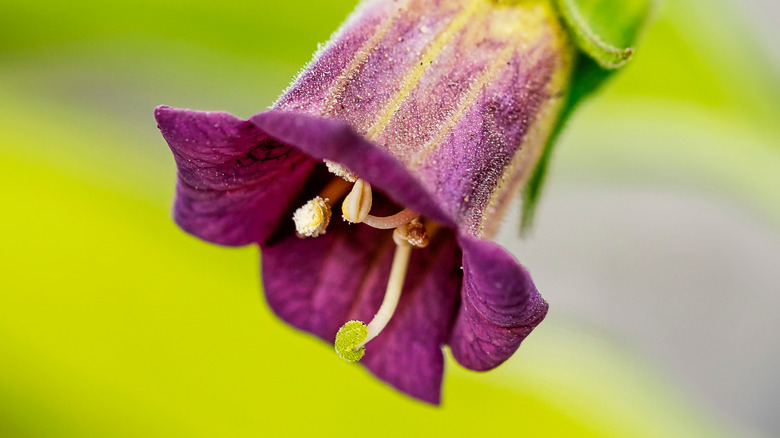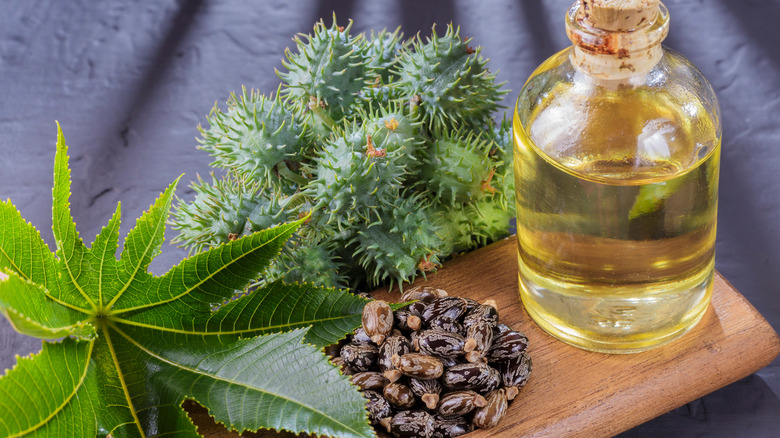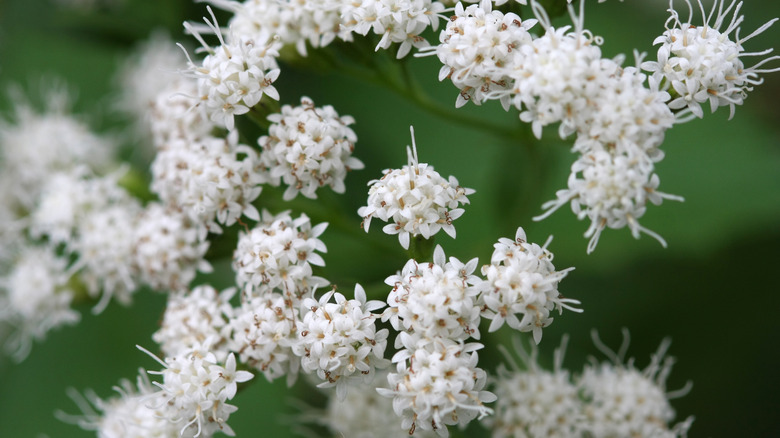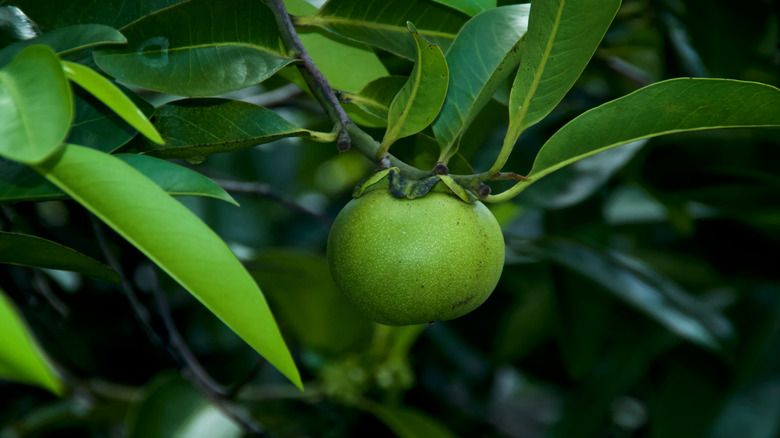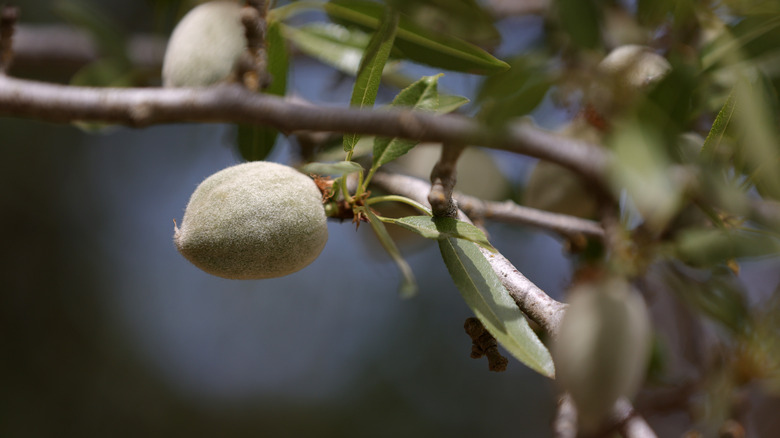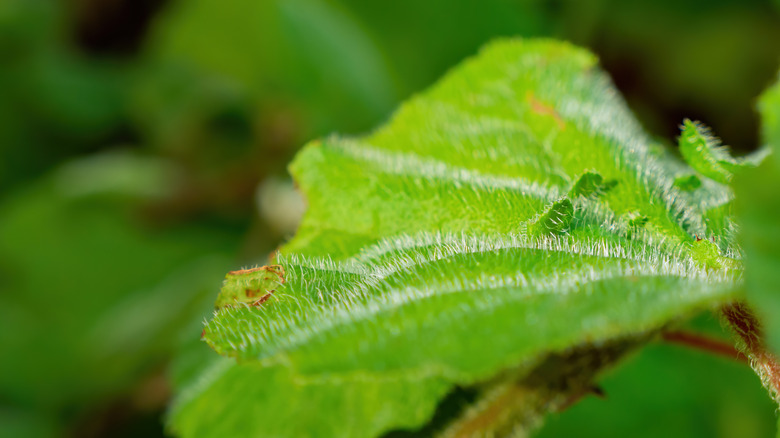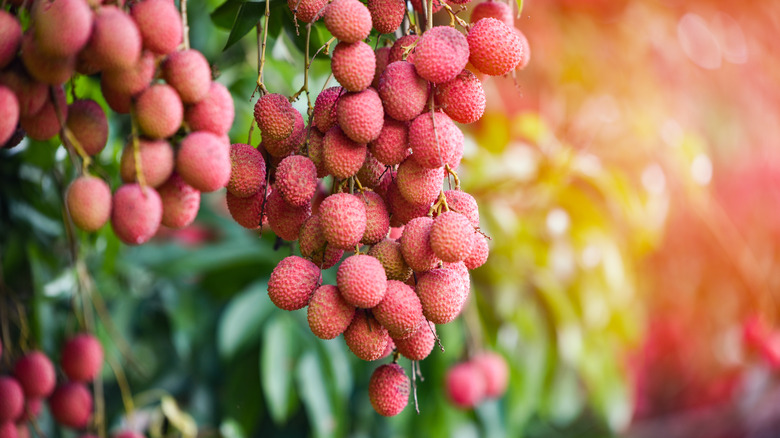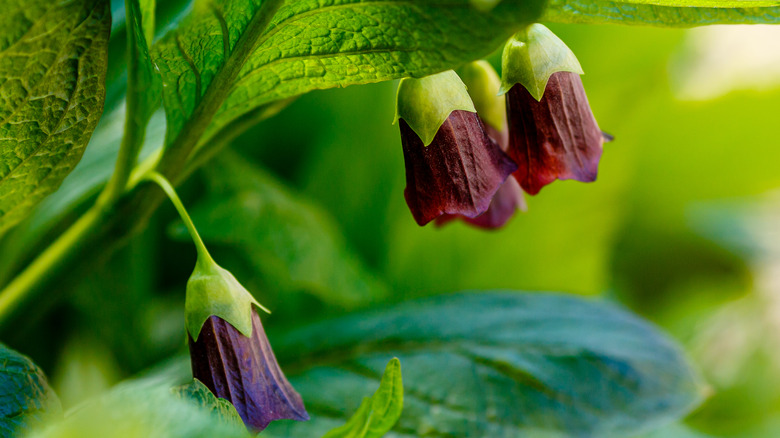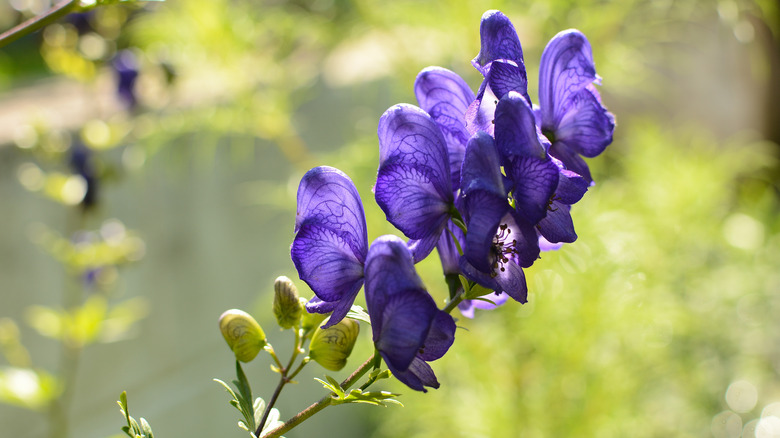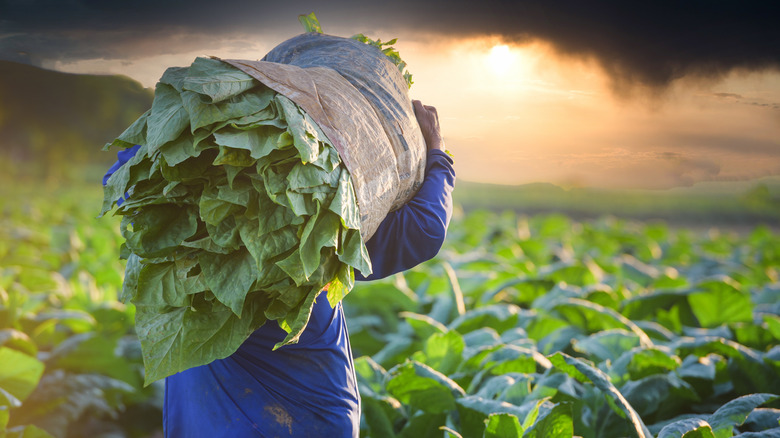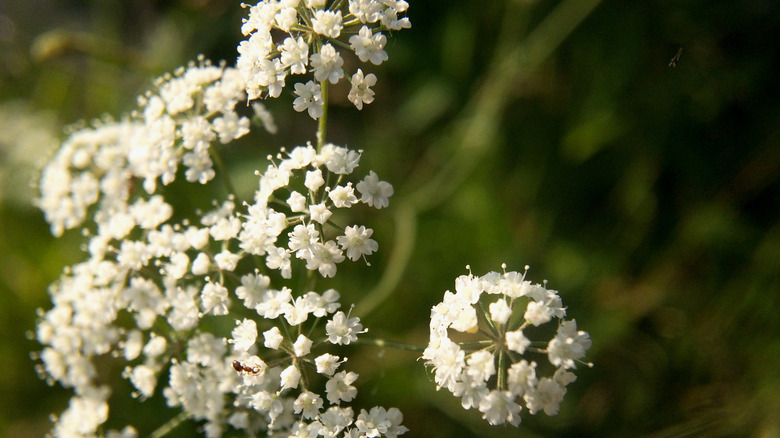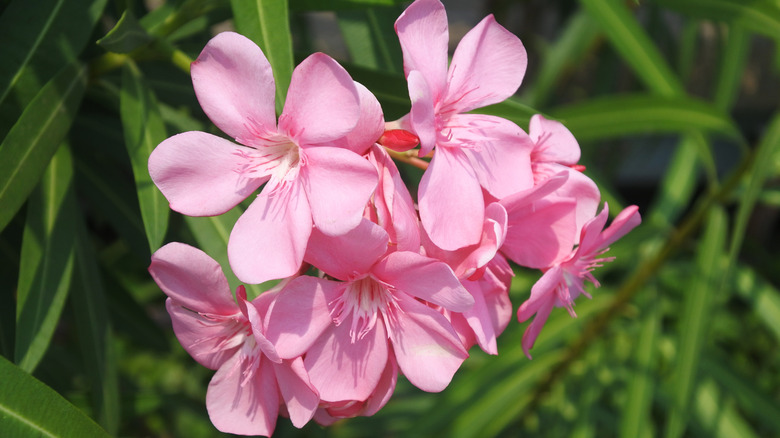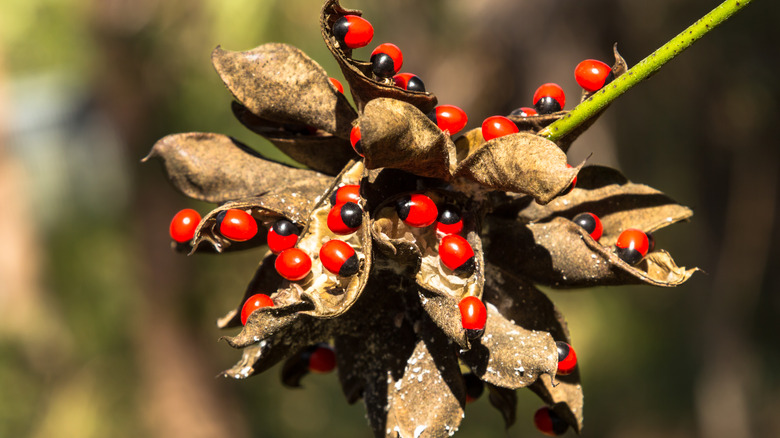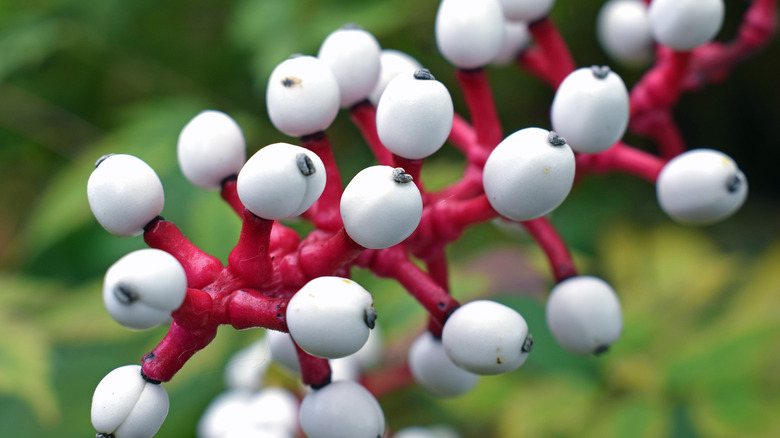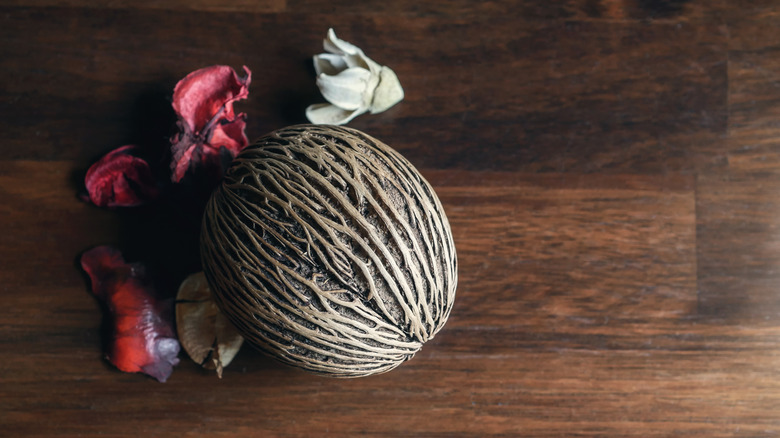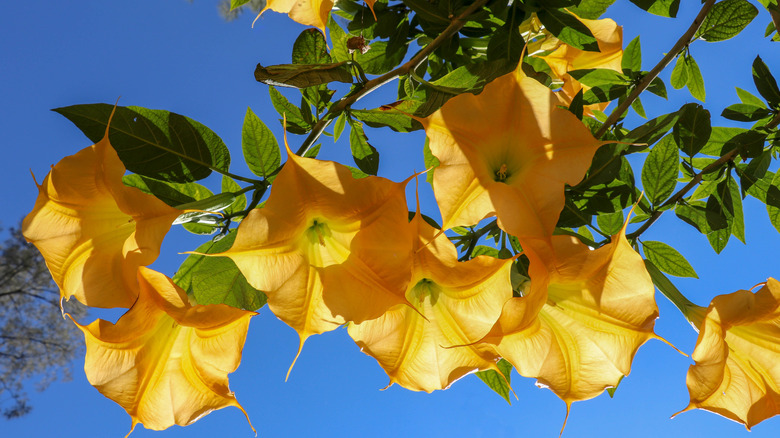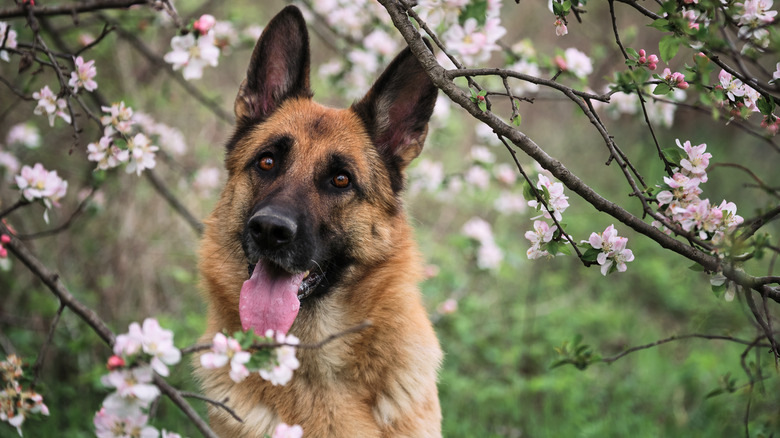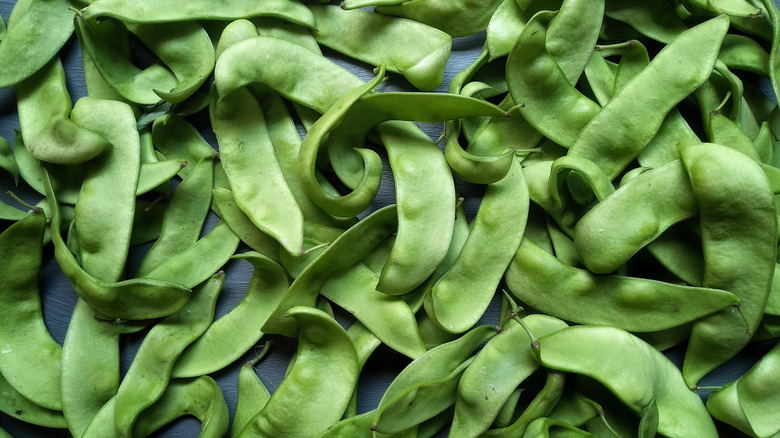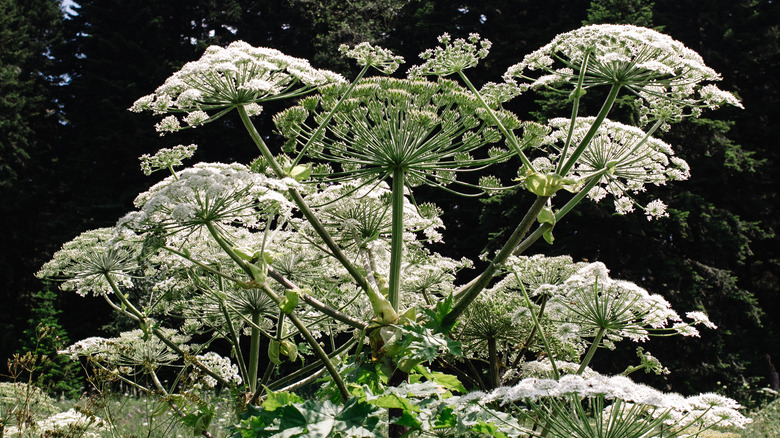Deadliest Plants In The World
There's a school of thought that suggests things that are natural are just better for us. Naturally occurring foods, for example, have a much better reputation than GMOs or foods that are loaded with artificial colors and flavors. (That's even though foods like peaches, corn, and bananas aren't nearly as natural as most people might think. Sorry.)
While that might be true in a lot of cases, using "natural is better and safer" as a blanket statement is a great way to die young. There's plenty of stuff out there that's all-natural and will definitely kill people in some super creative ways.
Take plants. Some plants are delicious, but others... not so much. They'll kill you if you eat them, some don't even like being touched, and there's one tree that doesn't even like being looked at. (Seriously. Just being in the vicinity of it can cause a world of hurt.) The bottom line here is that just because flowers, trees, and some innocuous-looking, even beautiful plants are a part of Mother Nature, well, let's just say that Mother Nature can be as cruel as she is kind.
Helpful kitchen staple or deadly plant?
Plenty of folks have castor oil in their homes, and Healthline says there's good reason to keep some on hand. It's an ultra-powered laxative, and used externally, it's invaluable in the treatment of cuts, skin conditions, acne, and dry scalp. Just... maybe don't eat the raw castor beans, all right? The American College of Emergency Physicians stresses just how important that is: Do not eat castor beans. Ever. In their native environment, the castor plant can reach up to around 40 feet tall, and in addition to attractive pink and red foliage, it also bears clusters of seed pods. Those bean pods each contain a massive dose of a compound called ricin, and they estimate that on average, it's about 6,000 times deadlier than cyanide.
If ricin sounds vaguely familiar, that's probably because it was widely believed to be the poison used in the 1978 assassination of journalist Georgi Markov. In a plot right out of a Bond movie, his autopsy uncovered a pellet in his leg — thought to have been filled with ricin, then injected with the unlikely but discreet method of an umbrella stab.
Death is ugly: It starts with generic gastrointestinal distress, but in less than a day it'll progress to things like organ failure, a complete collapse of the respiratory and cardiac systems, and death. Not only is there no antidote and no coming back from ricin poisoning, and it takes just four seeds to kill a typical adult.
Great for bees and butterflies, not so much for people
At a glance, white snakeroot seems like a great weed to have a problem with... if there has to be weeds. It's got pretty white flowers, and pollinators love it. The Brooklyn Botanical Gardens says it's one of the last flowers in bloom before winter hits, but unfortunately, it's also incredibly deadly.
The problem was up close and personal in the early 1800s. As settlers moved into the US from Europe, they didn't know it was dangerous, and saw no problem with their animals using it for forage. Native American tribes, however, absolutely knew how deadly it was, but why listen to the people who have been here forever? No one listened to Anna Pierce Hobbs Bixby, either. She was the doctor who actually did consult with the Shawnee and learned that when cows grazed on white snakeroot, they consumed a toxin that was transferred to their milk. Those who drank the milk then got sick and died from what was aptly called "milk sickness," and the most famous victim was the mother of Abraham Lincoln.
Bixby tried to spread the word about how important it was to get white snakeroot away from dairy animals, but without the backing of the rest of the medical community, it was a case of great advice falling on deaf ears. Today, commercially treated and processed milk has (most) any toxins removed, but white snakeroot? It's still out there.
Don't even look at this tree, just to be on the safe side
There's one tree that no one should ever stand under, touch, or even take a deep breath around. It goes without saying, then, that licking it is right out, and definitely don't eat the fruit — even though the apples of the manchineel tree do look pretty tasty. They're not, and Science Alert says this Florida tree definitely lives up to its Spanish name, arbol de la muerte. And yes, that translates to "tree of death."
Every single part of the tree is deadly because it produces a milky sap that contains so many toxins that it'll make a petri dish of bacteria cultured from a kindergarten class look like amateur hour. Eating the fruit will set off a chain reaction of vomiting, diarrhea, and constriction of the throat that can be deadly — and touching any part of the plant will cause severe pain, inflammation, and blistering. As if that isn't fun enough, the toxin is water soluble — that means that anyone or anything that happens to be nearby when it rains is going to get a toxic shower.
For something so deadly, it's surprising how widespread Southern Living says that it is. Sure, it might be great at protection against erosion, but... oh, right. Chopping it down is also going to hurt and burning them causes poison ash and toxic smoke that leads to things like blindness.
Just because they look like almonds, that doesn't mean they're edible
Not all nuts are created equal, and while almonds might be good for you, they're also on Mashed's list of nuts you should avoid, strictly because of the devastating impact almond farms have on the environment. There's another really good reason not to go eating almonds all willy-nilly, and that's because some are downright deadly. Healthline says that raw bitter almonds — the same kind one might use for baking, or to make almond paste — contain something called glycoside amygdalin. Eat a few, and they'll make a person super sick. Eat a couple handfuls, and they'll be absolutely deadly to an adult, because when this toxin hits the digestive system, it reacts to form hydrogen cyanide.
NPR tells a fascinating story about early attempts at domesticating these almonds and removing the cyanide. Way back in the 4th century, St. Basil wrote that if a hole was drilled into an almond tree and a piece of pine was inserted, the almonds would be safe to eat. Sounds unlikely, right? It totally worked: Today, scientists believe the stress of the procedure caused the tree to reroute energy from the production of toxins into survival mode.
There's not that much difference between the bitter almonds that can kill a child who eats just a couple of them and the sweet almonds used on Christmas cheese balls across the country: Just a single genetic mutation gave us the edible ones.
Australia has a stinging tree, because of course it does
For anyone who has ever wondered, "How badly could a stinging tree actually hurt?" Marina Hurley has the answer. According to the visiting fellow from UNSW Sydney (via The Conversation), it's "like being burnt with hot acid and electrocuted at the same time." The tree is called Dendrocnide moroides, but it's also known as the stinging tree and the gympie bush. The leaves of the plant are covered in tiny hairs, and at the tip of each hair is a little bulb that snaps off when it comes in contact with anything. Inside the bulb is a toxin, and here's where things get ugly.
The pain is excruciating — a soldier who was in Australia in 1941 recounted in his memoirs that after he was stung, he was tied to a bed for three weeks. His fellow officer committed suicide rather than live through the pain he experienced after choosing a leaf for "toilet purposes." The pain spreads to the lymph nodes, which start to swell. How bad it is and how long it lasts depends on the amount of toxin, and it can definitely be inhaled, too. When that happens, it results in severe damage to the respiratory system and nosebleeds, so that's fun.
Hurley later told Australian Geographic that during the course of her studies, she eventually developed such a severe allergy to being in the vicinity of the tree that it required medical treatment.
Delicious fruit or deadly delicacy?
Quick, name something that's better than a frozen lychee margarita. Can't, right? Unfortunately, while they might be delicious, they're also kind of deadly. According to the BBC, something terrible had been happening in India's Bihar region on an annual basis. Every year — for decades — otherwise healthy children would suddenly suffer seizures, loss of consciousness, and in about 50% of the cases, death followed soon after.
For years, no one had been able to figure out what was going on, until researchers started looking at lychees as the potential catalyst in hundreds of deaths. Lychees, it turns out, contain a toxin that interferes so completely with the body's glucose production that children who swiped a few fallen lychees in lieu of dinner were stricken with acute swelling of the brain just a few hours later.
The link was discovered in 2017, and children continued to die. In 2019, CNN reported that officials had learned a little more about what was going on, and suspected there's some connection between high temperatures, the malnutrition that often goes hand-in-hand with poverty, unripe lychees, and toxins that build up in the liver until the human body just sort of reaches a breaking point.
'Deadly' is right in the name
It's widely known as deadly nightshade, but even the plant's scientific name — Atropa belladonna — is a reference to what's going to happen to anyone who messes with it. Atropos, says the UK's Woodland Trust, is the third of the Greek Fates, and the one who cuts the string of life and decides when each person is going to die. Folklore says the plant is the property of the Devil himself, and anyone who insults him by eating some of the berries will pay the ultimate price.
The Wildlife Trusts says there's a few things going on here to make it so dangerous, and that starts with the small, black, delicious-looking berries that can kill someone who eats only a few. In fact, eating any part of the plant will cause a whole bunch of nasty consequences that range from death to hallucinations and convulsions.
It's that last part that's connected to deadly nightshade's fascinating history. According to The Guardian, the plant contains a group of psychoactive compounds. Once given names like the "sorcerer's pomade," it's been purposefully ingested by people in search of visions and a spiritual awakening. The US Forest Service says it's been used for less benign purposes: Roman warfare included the tactic of poisoning enemy foodstuffs with nightshade, and it was the poison chosen by the wives of Claudius and Augustus when it came time for some old-fashioned Roman assassination. It's so toxic that people have even been poisoned when they unknowingly ate honey contaminated with it.
Wolfsbane isn't just deadly for werewolves
Wolfsbane, says the Chicago Botanic Garden, shows up in countless works of fantasy and horror. As far back as ancient Greece, this pretty bluish-purple flower was connected with dogs: It was said to have first sprouted from the drool of Cerberus, Hades' three-headed guardian. Strangely, it's not just werewolves that have a very bad reaction to it — it's incredibly deadly to people, too.
Wolfsbane is one specific species in a group of plants called Aconitum, and the BBC says that other closely-related species called the Devil's Helmet, Monkshood, and the Queen of Poisons are all just as deadly. Eating the leaves will cause severe sickness, but it's the roots that are the most toxic: If those are ingested, heart failure and death typically happen in just a few hours.
Strangely, these plants remain a super popular addition to gardens, and John Robertson of the Poison Garden says it's the most dangerous plant that people tend to voluntarily plant in their garden. There's an important footnote to this, too: It seems as though some people don't have to ingest the plant to be killed by it. In 2014, a gardener named Nathan Greenway died after handling the plant on his boss's estate. The BBC reported that the cause of his death was multiple organ failure, and that it was in line with a fatal dose of toxin from the Monkshood he'd been working with.
The elephant in the room
When it comes time to crunch the numbers, there's no plant that's been more devastating than tobacco. Swedish says it's been around for a long time — around 8,000 years. It was medicinal and religious, until Columbus came along and — just as he ruined so many other things — he totally ruined tobacco.
The news that it's bad for you isn't anything new. At the same time 17th century scientists were writing about the consequences of smoking and the addictive qualities, young US states were banning it in public places and in 1604, England's James I wrote (via WHO), "Smoking is a custom loathsome to the eye, hateful to the nose, harmful to the brain, dangerous to the lungs, and in the black, stinking fume thereof nearest resembling the horrible Stygian smoke of the pit that is bottomless." Not long after, capitalism was getting into full swing. Pierre Lorillard founded his cigar- and snuff-making company in 1760, and the world didn't look back. By 1901, more than 3.5 billion cigarettes hit the streets in the U.S. alone.
In 2021, the CDC called smoking "the leading cause of preventable disease and death in the United States." They estimated about 14% of the population still smoked, and that 480,000 of those people would die each year. Look at the global picture, and the World Health Organization says that jumps to 7 million smokers who die annually, and another 1.2 million people who die from exposure to secondhand smoke.
The most famous plant-related death in history
When the Greek philosopher Socrates was told he was either going to die or stop carrying out his public lectures, he chose to die. He also chose the method: drinking tea with hemlock. According to "The Big, Bad Book of Botany: The World's Most Fascinating Flora" (via Slate), accounts of Socrates's last moments were probably exaggerated. After drinking hemlock, there would have been a lot less of reminding his assistants to settle old debts and a lot more struggling to breathe.
There are a few different types of hemlock, says the US Forest Service. It was the aptly-named poison hemlock that Socrates drank, but that species' close relative, the water hemlock (pictured), is just as deadly. It doesn't take much to kill either animals or people, and anyone unfortunate enough to take a bite will suffer from things like seizures, vomiting, abdominal pain. It's all typically followed by death within an hour of eating it. The entire plant is toxic, and it's actually pretty understandable how someone might make a lethal mistake and nom away. It looks a lot like parsley — it's in the parsley family — but it's most definitely not parsley.
The Alderleaf Wilderness College says the cause of death from eating hemlock is usually respiratory paralysis, and it can happen as quickly as 15 minutes after ingestion. Given that it's found in wet areas and pastureland across Europe and North America, it's highly recommended that when in doubt, foraging nature-lovers should skip the parsley.
It is definitely not a cure for COVID-19
Once the world got a few months into the COVID-19 pandemic and the "we'll-all-get-through-this-together" mentality started to wear a little thin, there were all kinds of ideas put forward with varying degrees of experience, medical knowledge, and insanity by people desperate for a cure. In August of 2020, CNN reported that then-President Donald Trump was "enthusiastic" about the idea of using an extract from oleander as a treatment for COVID. The extract he was talking about is called oleandrin, and according to Emory University assistant professor of dermatology and human health Cassandra Quave, there's a huge problem with using oleandrin.
"Oleandrin," she says (via The Conversation), "is the chemical that causes the plant's lethal toxicity. It is known by scientists as a cardiac glycoside, a class of organic compounds with a common feature: They exhibit powerful effects on heart tissue, often with deadly consequences."
Given how popular a garden plant oleander is, it's not entirely surprising that accidental poisonings happen all the time. Mount Sinai says that each part of the plant contains toxins — and yes, there's more than one — and there's an almost shocking variety of symptoms poisoning can cause. That's everything from blurred vision, low blood pressure, and stomach pain to fainting, lethargy, and death. Dying, says Quave, is not the way to cure COVID.
Decorative and deadly
Abrin, says the CDC, is a naturally occurring poison that has some brilliant uses. It's definitely deadly, but when it's prepared and administered correctly, it's super effective at killing cancer cells. Way to go, abrin! Unfortunately, there's a downside. Abrin is found in the seeds of a plant called the rosary pea, and these neat-looking black and red seeds are often used to make jewelry... and anyone who's ever made or been in the vicinity of a toddler knows where this one's going.
Swallowing the seeds of the rosary pea can definitely lead to some major problems — and to make things more complicated, they're problems that might not even show up for a few days. Abrin enters a person's cells, and gradually starts shutting things down. Within a few days, that can lead to things like seizures, hallucinations, and finally, organ failure.
The National Capital Poison Center says there hasn't been much research done on just how many seeds someone needs to swallow in order for it to turn deadly, so they say any amount is considered dangerous. There's no known antidote for abrin and rosary peas, so a safe bet would be to just skip those rosary pea bracelets and go with something that doesn't come with a free risk of death.
Just look at them — of course they're deadly
There's no arguing this one: The plant known as Doll's Eye is incredibly creepy. It definitely looks like it has a bunch of little eyeballs growing on stalks, so it's not entirely surprising that Our Breathing Planet says that yes, they can definitely kill a person.
It's found mostly in the southern US, and it's those creepy berries that are the most dangerous. They contain a cardiogenic compound, and as they ripen through the summer months, that compound becomes more and more potent. Anyone eating the berries (although it's tough to imagine anyone finding these appetizing) will find themselves feeling their heart start to slow. Eat enough, and it'll just stop.
The official blog of Oakland County, Michigan, says that the plant — which is also known as the White Baneberry — can teach us an important lesson about biology. It might make sense to think that if you're lost in the woods and feeling pretty peckish, you might be able to get an idea about whether or not something is safe by watching the animals. Birds love these berries, and they're perfectly capable of eating them with no ill effects. The same absolutely can't be said about people, though, and there's a bit of wilderness wisdom to keep in mind.
Is there a perfect murder weapon? Maybe...
It grows along India's southwest coast and in Madagascar, and while it's properly called Cerbera odollam and less formally called othalanga, it's sometimes referred to as the suicide tree. That's because the seeds it bears (pictured) are almost unthinkably deadly — so deadly that in the 19th century, Madagascar authorities would give accused criminals and witches the seeds to eat. If they didn't die, they were innocent, and if they did die, they were guilty — and apparently, there were a lot of guilty people in Madagascar.
The Washington Post says that it's estimated that more people commit suicide by eating the fruits of the othalanga than by eating any other plant, and around 75% of those are women. Strangely, the plant — which is used to make rat poison — hasn't been studied much, so it's not clear just how it works. What is clear, though, is that there's something in it that stops a person's heart. New Scientist adds that since it's incredibly hard to detect, it makes such a good and often-used murder weapon that it could just as reasonably be called the murder tree.
Othalanga seeds have been linked to hundreds of suicides in India, but they're also making their way to the US. In 2016, ABC reported that Natosha Anderson was hoping to raise awareness about the accessibility of the deadly seeds after losing her child to suicide.
If you or anyone you know is having suicidal thoughts, please call the National Suicide Prevention Lifeline at 1-800-273-TALK (8255).
Angel? Or the devil?
The chances of coming across angel's trumpet are pretty high: SFGate says it's a popular plant that shows up in gardens across the southern US, but Vice describes the flower in another way.
They say the angel's trumpet contains a compound described as "one of the world's scariest drugs." Specifically, that's something called scopolamine, and when it's inhaled — including when someone stops to smell the innocent-looking flowers — it can cause hallucinations and a state of consciousness that involves the complete loss of free will. Someone who gets just a whiff will be left at the mercy of those around them, and yes, it's absolutely gone horribly wrong. It's been used in everything from kidnapping and sexual assault to convincing people to sign over their life savings, meaning that this particular compound has definitely earned the street name of Devil's breath.
And yes, a large enough dose can be fatal. Effects go from suggestibility to unconsciousness, respiratory failure, and finally, death. The fact that it's completely legal to grow in most states is pretty shocking, and it's also proof that sometimes, you shouldn't stop to smell the flowers after all.
When cherry trees can kill our four-legged friends
Cherries are delicious, there's no secret there. But according to Michigan State University, they're also deadly — to livestock. Here's how it happens. Black cherry trees have several different compounds that are normally contained in different cells and tissues within the plant. However, when the trees are damaged — as they were during severe storms that swept through orchards in 2017 — the compounds combine to form hydrogen cyanide. And that's deadly: just over a pound of the leaves would be enough to kill a standard-sized dairy cow.
All grazing livestock is susceptible to this kind of poisoning, and the PennState Extension says that the smaller the animal, the smaller the lethal dose becomes. For a sheep, they'd only need to eat about .18 of a pounds of the leaves for it to turn into a deadly snack.
And it's an ugly, terrible death that involves things like convulsions, kicking, panting, and drooling. Cherry trees near pastureland are considered a major threat to the health and safety of livestock, and agricultural extensions recommend that all cherry trees should be removed from the vicinity of any grazing animals.
Make sure you eat your beans... carefully
Lima beans are definitely one of those questionable vegetables that most people eat because they're healthy, not because they're tasty. Eating Well says there's an important footnote to lima beans, though, and anyone that hates them should pay close attention: Here's your get-out-of-lima-beans-forever card. In addition to good things like fiber, vitamins, and minerals, Healthline says that raw lima beans also contain something called linamarin. When linamarin hits a person's digestive system, it releases cyanide — and in your stomach is the last place any person wants to find some cyanide.
What happens to a person who ingests cyanide depends on the dosage, and according to the CDC, side effects range from dizziness, weakness, and nausea to respiratory failure, convulsions, loss of consciousness, and death. Different types of lima beans have different levels of cyanide, and while those grown and sold in the U.S. are generally a little lower in this compound, it doesn't take a large serving of an improperly cooked bean to feel the side effects.
Cooking does remove the compound, and about 30 minutes of boiling will reduce the cyanide levels by about 80%. Not comfortable with that? That's a great excuse to skip the lima beans. You're welcome!
Honorable mention: Everything's fine... until you try to get rid of it
Giant hogweed definitely lives up to the name: It can reach heights of up to 14 feet, and it's kind of pretty. That's basically why it's found in the U.S. and in Europe at all: It's native to the Caucasus Mountains, and it was spread by early 20th century gardeners who were looking for big, impressive plants to include in big, impressive gardens. Choosing giant hogweed was very, very dumb. The entire plant is filled with a sap that contains toxic components called furanocoumarins. Get that on your skin, and Healthline says that's what kicks off a chemical reaction called phytophotodermatitis.
According to the New York Department of Environmental Conservation's Giant Hogweed Program Coordinator Naja Kraus (via Good Housekeeping), "The more sap you touch, the greater damage it causes. Once you get it on you, it makes your skin unable to protect itself from the sun." The reaction happens on a genetic level — she says, "It basically fuses your DNA in that area."
What follows are second- and third-degree burns that could require skin grafts, along with the potential for blindness and respiratory problems. Permanent scars are likely, and the increased sun sensitivity can last for months, and the carcinogenic compounds in the plant have been linked to causing cancers as well as birth defects (via BHG). Experts recommend not removing it yourself but calling your state's department of conservation.
